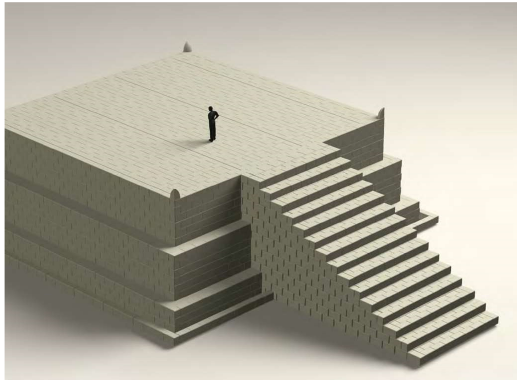Ezekiel 43:1-5
In Ezekiel 9:23 the Lord went to the threshold and in 10:18, the prophet saw the glory of the Lord depart the temple. In 11:23 He had gone to the East. Ezekiel now sees the Lord return from the same direction. It was a great sound and a great sight. "When I came to destroy the city" is a reverence to the vision of 9:23.
He was taken to the inner court and saw the glory of the Lord had filled the temple. This is like 1 Kings 8:10 when He came to Solomon's temple. Yet, Isaiah 66:1-2 tells us that God does not dwell in temples made with human hands. Heaven is His throne. As Christians, we know He dwells in us, as we are the temple of God.
Ezekiel 43:6-9
Ezekiel heart God speak. He confirms what Isaiah said in 66:1-2. God doesn't dwell in a temple made by men; His throne is in heaven. However, the earth is His footstool. The Lord promises twice in this passage that this dwelling among them will be forever. The Lord's name is restored, fulfilling His intentions of Ezekiel 34. Israel is restored, fulfilling Ezekiel 37. There would be no more idolatry as in the days when they set their pagan temples up next to His temple. A wall separated them, as if that made it all right.
Ezekiel 43:10-12
Ezekiel was shown this vision so that he would deliver it to the people. It's purpose was that they would realize their shame – not just for the sake of shame but to move them to repentance. From their repentance, they would receive the design of the temple; all its design, laws and ordinances. Until there was repentance, these things were just rote, religious activity. From repentance they would honor the sanctity of the temple and protect the whole are keeping it holy. This is in obvious opposition of their previous actions.
Ezekiel 43:13-17
The tour of the temple shifts from the temple itself to the implements, procedures and purpose, beginning with the altar. The temple had always been a place of worship, part of that worship was sacrifice. The sacrifice acknowledged the understanding of God's law, man's fallenness and the requirements of righteousness and holiness. It was at the altar man's sin was acknowledged, atoned for a preparation to approach the Lord.
The 'long cubit' is a cubit and a handbreadth, about 21" long. A person came to the altar from the east and came up the steps. The altar was 7' high and the top of it was 24.5' square with the hearth in the center 21' square. The 4 horns extended upward from the four corners of the hearth.

Ezekiel 43:18-27
Some day this altar would be built, but before it could be put into service it had to be consecrated. The sin offering had to be made first before the burnt offering could be made.
- Day 1: the first offering was a young bull. The priests took some blood from it and put on the 4 horns, the 4 corners and the rim around it. Normally some parts would be offered on the altar while the remainder was to be burned in the appointed place outside the temple. See Lev 4:12-21, 8:17.
- Day 2 - 7: a kid of the goats was made a sin offering, cleansing the altar the same way as day one. A young bull and a ram, these are offered with salt, as a burnt offering.
On day 8 the altar is consecrated and can be used for burnt offerings and peace offerings. From the consecrated altar, the sacrifices are accepted and the Lord offers acceptance to the worshiper.
©2020 Doug Ford
